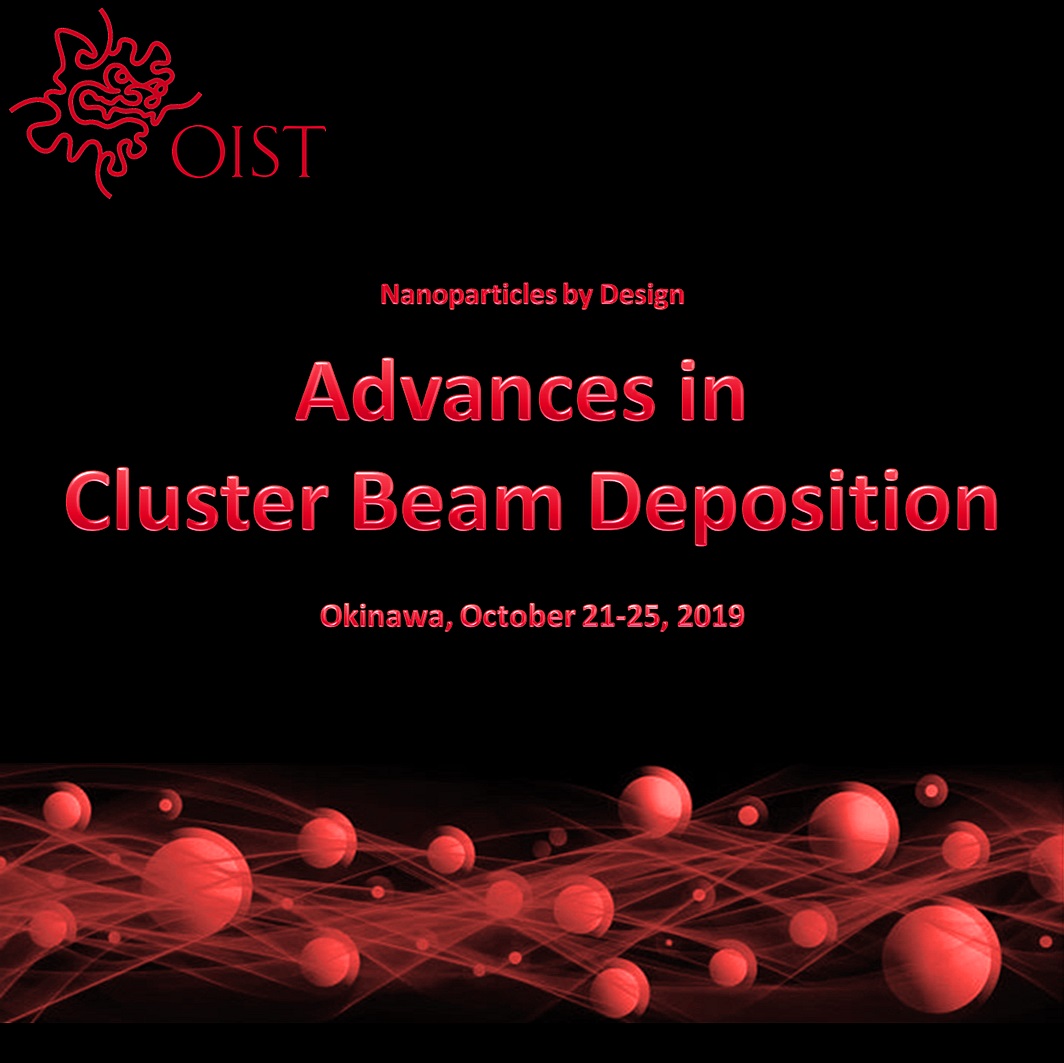Advances in Cluster Beam Deposition

Personal Message from Mukhles Sowwan
Dear all,
I would like to thank you personally for your interest in the forthcoming “Advances in Cluster Beam Deposition” workshop, to be held on October 21-25 at OIST, Japan.
My current unit at OIST and our group leader, Panos Grammatikopoulos, will be glad to host the workshop and ensure that it will be as successful as those we were happy to host during the past years. If you have any inquiries, please, do not hesitate to contact Panos or the secretariat of the workshop for further information.
I sincerely believe that the workshop will be a productive forum of new ideas and a pleasant experience for all participants, and that it will help solidify the Cluster Beam Deposition community of which I feel privileged to be part.
Sincerely,
Mukhles Sowwan
Overview
Clusters of materials formed through the aggregation of atoms exhibit properties different from their bulk counterparts. Ranging in size from a few atoms to tens of nanometers, they possess properties governed by size, shape, structure, and composition.
The ability to tune and tailor the properties of clusters has led to their adoption as building blocks in nano- and biotechnology applications, including - but not limited to - electronic devices, biosensors, environmental sensors, catalysis, and smart composite technologies.
To reach the goal of large-scale synthesis of clusters with well-understood properties and uniformity, multi-disciplinary expertise is required. From fundamental theoretical and experimental physics to the keen insight of biomedical savvy and engineering proficiency, and with materials analysis and characterization to illuminate the path, a dynamic community of scientists exchanging and disseminating knowledge and insights is essential in achieving this aim.
The aim of this symposium is to highlight the latest advancements in clusters science and technology. This includes information relevant to size-dependent physical and chemical properties, characterization techniques, and examples of potential applications of clusters. Our hope is that, in addition to providing new ideas which our participants can carry forward, we will develop, nurture, and grow an international network of effective and energetic researchers in this exciting field.
Symposium Topics
Broadly, the symposium will focus on designing, synthesizing, understanding, controlling, and applying clusters. These topics will not be used to sort talks, as it is expected that some talks may cover more than one topic. Instead, the participants in the symposium will cover many aspects of cluster studies through such main points as:
1- Theoretical studies and computational modeling of the synthesis, growth kinetics, substrate interaction, and functionality of clusters. This is the theoretical characterization of the clusters on the atomic scale, clarifying the crystallographic structure, and highlighting the surfaces, interfaces, and defects involved. These topics may include approaches from ab initio quantum mechanical approaches, Molecular Dynamics and Monte Carlo simulations, up to Finite Element analysis.
2- Structural and chemical characterization techniques. There will be a focus on the characterization techniques available to enhance the study of clusters. Examples of techniques include, but are not limited to: scanning probe microscopy (STM and AFM), electron microscopy (HRTEM, HRSTEM, HREELS, environmental-TEM), X-ray photoemission spectroscopy (XPS), X-ray absorption spectroscopy (XAS), etc.
3- Physical, chemical and biological characteristics and phenomena of experimentally synthesized clusters; specifically, the characterization of e.g. electronic, structural, optical, thermal, and magnetic properties of clusters. Additionally, the associated behavior of clusters to external phenomena such as aggregation, segregation, coalescence, diffusion, crystallization, and amorphization will be discussed.
4- Clusters in action: covering the various ways clusters have been utilized including electronic devices, sensors, biomedical systems, optics, catalysis, smart coatings, and cluster assembled materials and nanostructures. Discussion will also revolve around strategies and ideas to allow the scale-up of cluster production, in addition to methods of integration with micro-fabrication.


























